Get PeakVisor App
Sign In
Search by GPS coordinates
- Latitude
- ° ' ''
- Longitude
- ° ' ''
- Units of Length

Yes
Cancel
Share ×

Scan the QR code and open PeakVisor on your phone
❤ Wishlist ×
Choose
Delete
The Līhu‘e-Kōloa Forest Reserve is on the eastern portion of the island of Kaua’i in the US state of Hawai’i. The reserve protects watersheds and lands vital for the island’s native biodiversity. There are 20 named peaks, with Kawaikini being the tallest and most prominent at 5,223 feet (1,592 m).

The Līhu‘e-Kōloa Forest Reserve is in the mountainous region of eastern Kaua’i. The reserve was initially established in 1909 and consists of two significant areas, Wailua and Kalāheo, which cover a total of 12,500 acres (5,059 ha). The forest lies within Kaua’i County, encompassing the islands of Kaua’i, Ni’ihau, Lehua, and Ka’ula.
The primary purpose of the forest is to protect the island’s vital watersheds. These wetlands help support agriculture, farmland, native plants, and native flora throughout the surrounding region.
The lush landscape receives immense annual rainfall on the island's windward side. These westernmost sections of the forest feature steep hillsides with abrupt elevation changes. The terrain in the eastern area of the forest reserve begins to flatten out, giving way to more agricultural lands. A mixture of native and non-native vegetation exists throughout the forest, along with sections of cultural significance known as mauka areas in the Hawaiian language.
Many of the ridgelines in the protected region run in the northeast-to-southwest direction, with smaller ridges branching out in various directions. Between the two non-contiguous sections of land is the Kilohana Crater.
Headwaters of the North Fork Wailua River originate within this protected area. Various trails throughout the region are used for hiking, four-wheel driving, horseback riding, and commercial ecotourism. Sections of the forest can also be used for hunting and fishing.
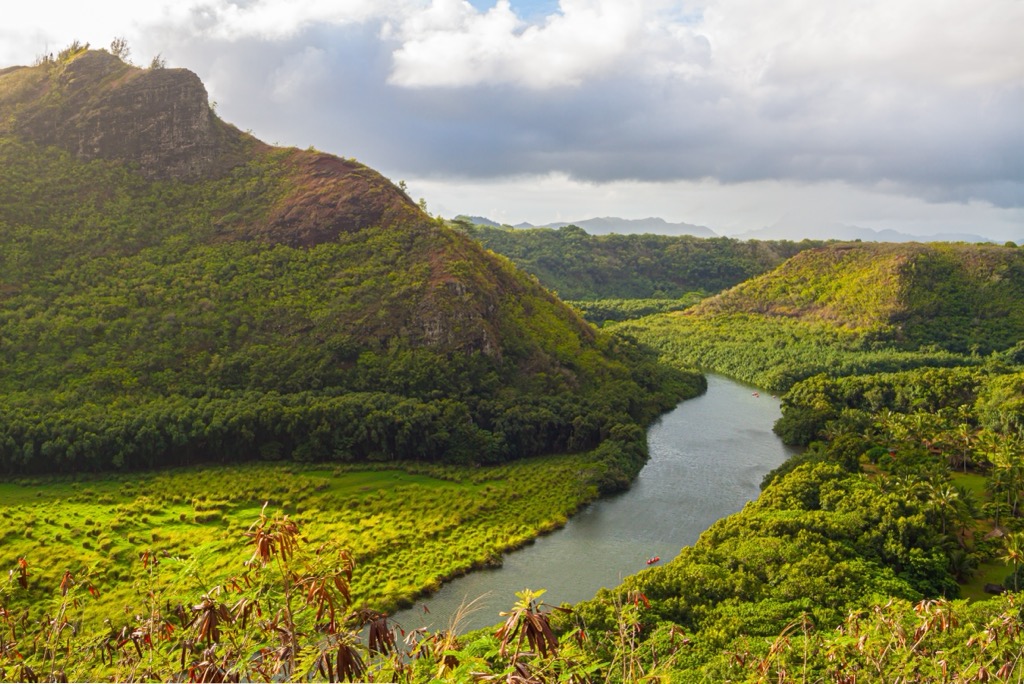
Additionally, the Līhu‘e-Kōloa Forest Reserve is near numerous other areas for outdoor recreation. The Wailua Game Management Area is directly east of the reserve, while the Keālia and Moloa’a Forest Reserves are northeast. The Halelea Forest Reserve is to the north, while the Wainiha Preserve is to the west.
The geological history island of Kaua’i is intertwined with the other Hawaiian Islands. These islands mark the tallest peaks of a massive mountain chain that rises from the ocean floor. The mountain chain spans roughly 3,500 miles (5,633 km) across the Pacific Ocean. The Hawaiian Islands are one of the world's most geographically isolated archipelagos.
These islands, including the landscape in the Līhu‘e-Kōloa Forest Reserve, have a volcanic geological history. Each island formed as the Pacific Plate shifted over the Hawai’i hotspot. Kaua’i originated roughly five million years ago and is the oldest of the major Hawaiian islands.
The Pacific Plate is still actively moving across the Hawai’i hotspot at a rate of 32 miles (51 km) every one million years. Various other mountains are part of this island chain, with most still underwater. As a result, active volcanism is visible on the youngest and largest island in the chain, Hawai’i (dubbed the ‘Big’ Island).
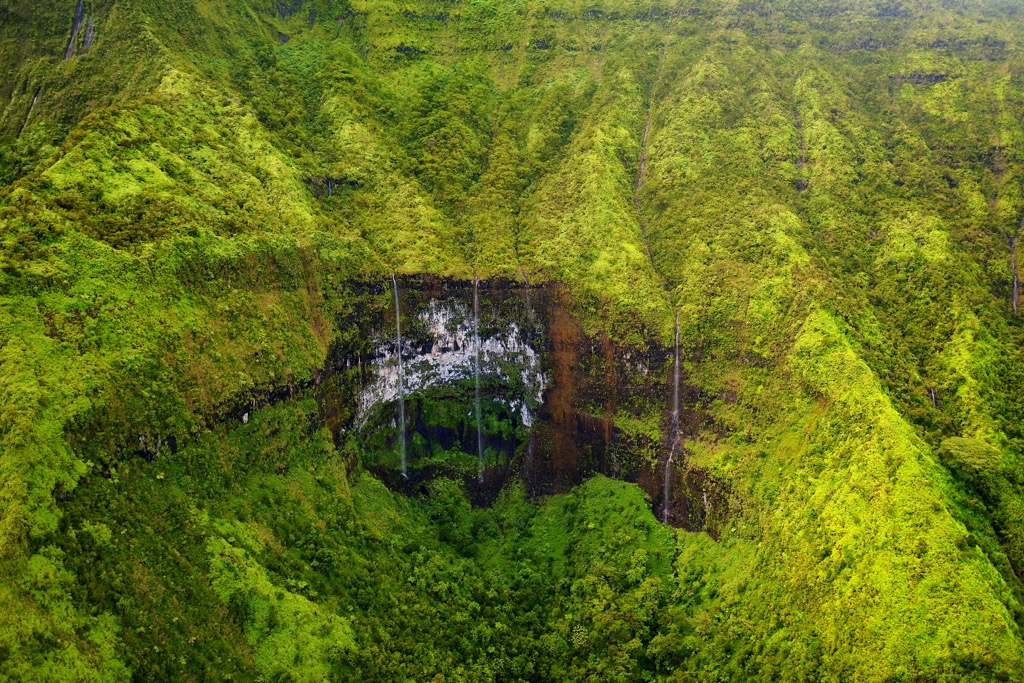
Millions of years of erosion have carved out the island of Kaua’i, leaving behind the island’s celebrated steep, lush hillsides. The older islands in the chain, such as Kaua’i and Oahu, are geographically much smaller and feature more dramatic cliffs formed by extensive erosion.
The island of Kaua’i features a massive caldera complex and a lack of rift zones. These geological features are unique to Kaua’i compared to the other major islands in the archipelago. Major peaks within the Līhu‘e-Kōloa Forest Reserve include Kawaikini, Wai’ale’ale, Kahili, Pōhakupele, and Hanahanapuni.
The tropical climate, combined with the abundance of rainfall on the island of Kaua’i, has created a lush rainforest. Various native and invasive plant and animal species inhabit this region. Some common native plant species include kukui, ohia, koa trees, albizia, java plum, and strawberry guava. Some endangered species on the island’s windward side are adenophorus periens, bonamia menziesii, cyanea asarifolia, exocarpus luteolus, and labordia lydgatei.
Some of the most common invasive species include shoebutton ardisia, satin leaf, ironwood, juniper berry, white ginger, thimbleberry, African tulip, Java plum, and albizia.

Native animals in the surrounding network of forest reserves include koloa (Hawaiian duck), Awaous guamensis (goby), ‘opaekala‘ole (freshwater shrimp), Amastrid land snail, Newcomb’s snail, ‘ōpe‘ape‘a (bat), Hawaiian petrel, and the endemic akikiki bird.
Invasive animals include mosquitoes, songbirds, goats, and feral pigs and cats.
The Hawaiian Islands are home to a rich history that dates back over a thousand years, long before the arrival of European colonizers.
Polynesians from the Marquesas were the first to settle on the Hawaiian Islands. Arriving around 400 CE, these settlers were already highly skilled farmers and fishermen. This group of Polynesians also brought important foods and plants. A second wave of travelers from Tahiti later settled on the islands.
The early communities were primarily near freshwater streams and creeks along the coasts. The settlers evolved their own independent forms of government, and a different chieftain ruled each island. As the communities grew, they would often battle one another to expand their territory. The people of Hawaii were isolated from the rest of the world for over 500 years.
The forest reserve occupies sections of the Ahupua‘a of Wailua, Kalāheo, Wahiawa, and Lāwa‘i. Ahupua’a is a Hawaiian term for the subdivision of land which extends from the sea to the mountains. Each Ahupua’a includes vital resources such as watersheds, farmland, forest, and ocean.
Captain James Cook was the first European colonizer to arrive in 1778. Upon his return in 1779, Cook was killed on the island of Hawai’i. The warrior chief known as Kamehameha the Great led a war to unite the islands over the next 15 years. The Kingdom of Hawai’i (Hawaiian: Ko Hawaiʻi Pae ʻĀina) was established in 1795.
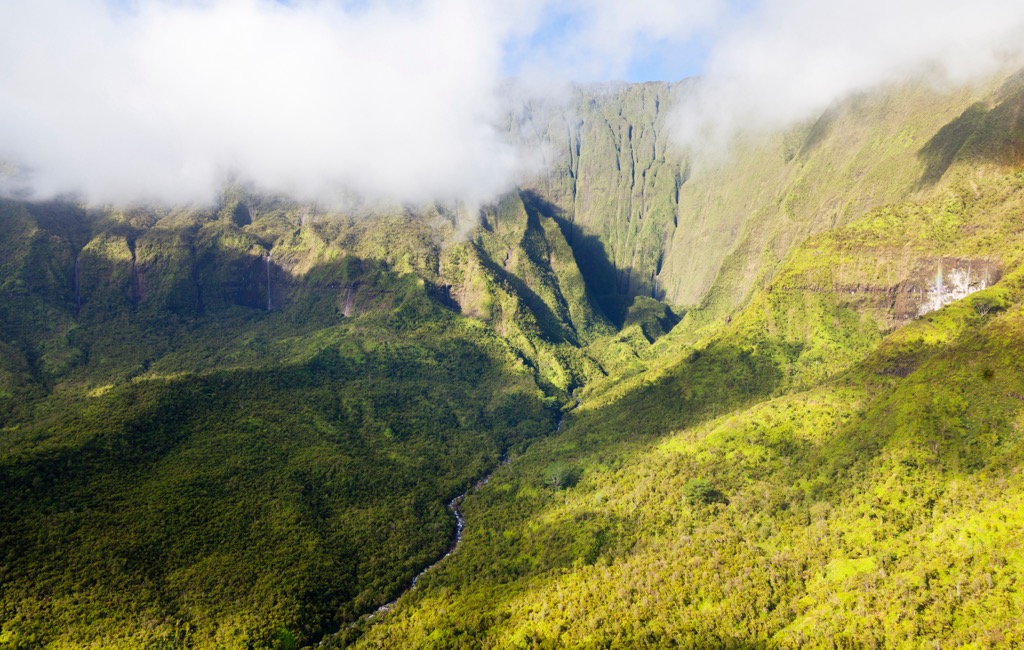
Kaua’i eventually joined the kingdom in 1810 when the islands’ chief swore allegiance to Kamehameha. Two prominent dynastic families, the House of Kamehameha and the House of Kalākaua, made up the independent constitutional monarchy of the kingdom.
Christian missionaries first arrived on the islands in 1820, bringing infectious diseases that devastated the native population. When Cook arrived on the islands, the population of Native Hawaiians was around 300,000 but dwindled to just 70,000 by 1853.
The Kingdom of Hawai’i had a thriving agriculture-based economy and had developed various trade deals with numerous nations. The first sugar extraction mill on the island of Kauai was built in 1835. Plantation production quickly rose, leading to the immigration of workers from
China, Japan, the Philippines, Korea, and Portugal.
Lāhainā became the capital of the Kingdom of Hawai’i in the early 18th century. In 1824, Kamehameha I and his wife died on a state visit to England. Liholiho (Kamehameha II) ruled the Kingdom following the death of Kamehameha I. Later, King Kalākaua became the first monarch in history to circumnavigate the globe, completing his expedition in 1881. ‘Iolani Palace, the official residence of Hawaiian monarchs, was completed the following year on the island of Oahu. The palace featured the first electric lights in the Kingdom of Hawai’i and other amenities not yet found at the White House in Washington, D.C.
In 1887, the Bayonet Constitution was drafted by Lorrin A. Thurston. This constitution was brought to King Kalākaua by 3,000 residents, including an armed militia, ultimately leading to the King being forced to sign the document. This new constitution stripped the King of most of his powers and created a constitutional monarchy.
Non-native Hawaiian businesspeople and politicians overthrew Queen Lili’uokalani, her cabinet, and the government of the Kingdom of Hawai’i in 1893. The US Government backed the coup, ultimately forcing the Queen into house arrest at Iolani Palace following the 1895 rebellion. The Queen was later forced to sign a declaration known as “Liliuokalani Dominis'' which formally abdicated her throne.
The Newlands Resolution was signed in 1898, leading to the annexation of the Kingdom and the creation of the Territory of Hawai’i. Shortly after, in 1901, the first hotel was constructed in Waikīkī, beginning the islands' commercialization.
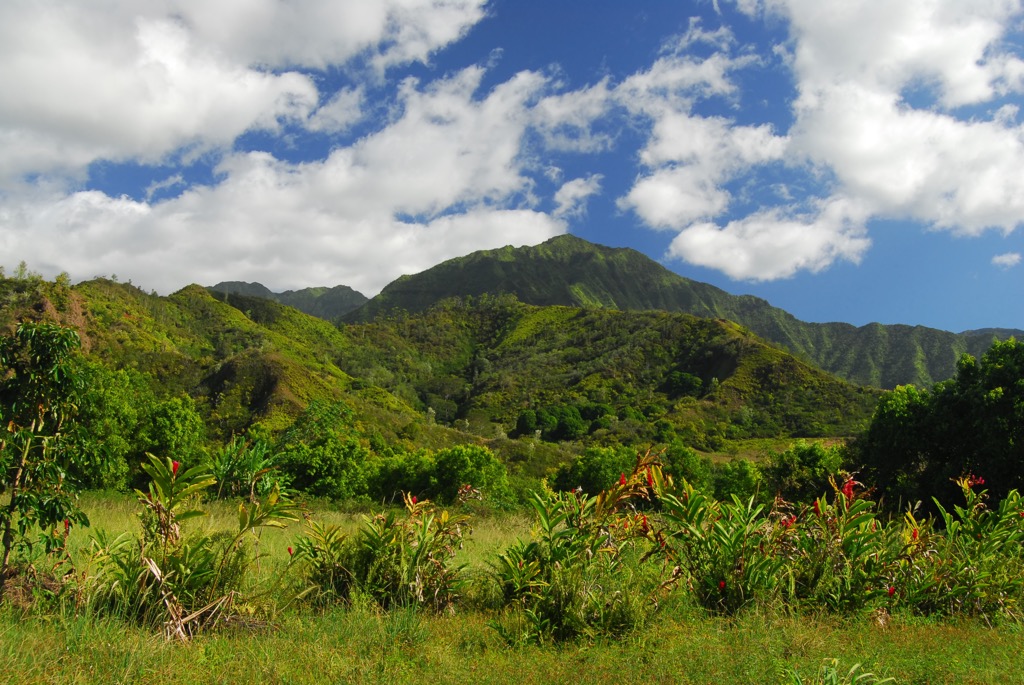
The US government and missionaries drastically altered the Hawaiian Islands, colonizing the region and stripping Hawaiians of their native practices, culture, and homelands. Over the past 100 years, the islands have become prominent tourist destinations. The resulting demand for real estate, goods, and services has caused rising living costs, forcing many Hawaiians to leave their homes.
There are various established hiking trails in the Līhu‘e-Kōloa Forest Reserve. Below are a few notable routes:
The most popular hiking trail in the region is the Kuilau Ridge Trail. This out-and-back route begins in the parking lot of the Keahua Arboretum located on Kuamo’o Road. The trail climbs gradually throughout, passing through the lush rainforest landscape.
Various creeks and streams run through the surrounding terrain, with viewpoints located along Kuilau Ridge. Hikers can see views of the nearby mountains, ridgelines, and valleys. Sections of the trail can become quite muddy, so sturdy footwear is recommended. This route is 3.6 miles (5.8 km) long with 666 feet (203 m) of elevation gain round trip.
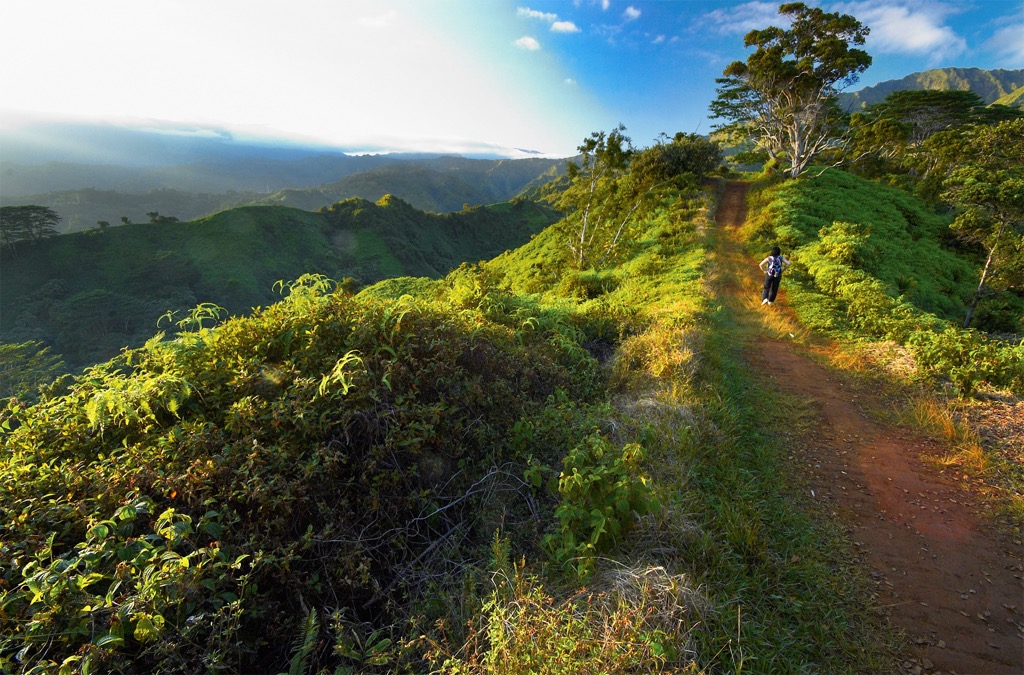
This out-and-back trail begins in the Wailua Game Management Area and climbs gradually along the edge of the forest reserve. Hikers are rewarded with sweeping views of the nearby valley to the south and the towering ridgelines to the northwest. The trail passes numerous creeks and streams, including the Moalepe and Opaekaa. This trail is 5 miles (8 km) long round trip and features 711 feet (217 m) of total elevation gain.
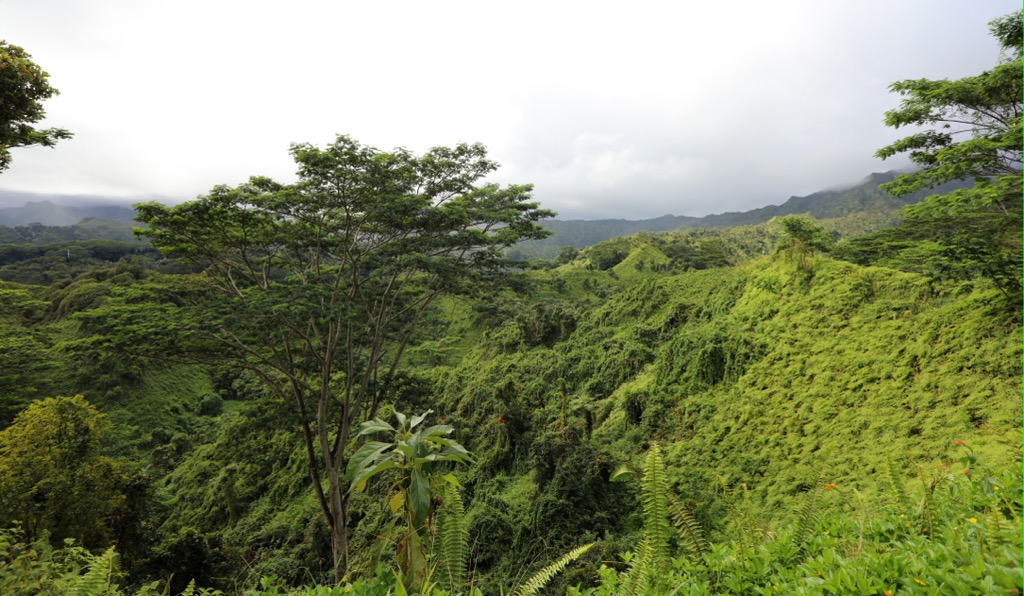
The Waialeale Blue Hole Falls Trail climbs through the rainforest, following along the North Fork Wailua River. This route begins gradually before steepening to reach the base of the surrounding ridgeline.
Hikers pass along Blue Hole Falls before reaching the Weeping Wall, where water cascades down the cliffside. Blue Hole Falls also has a spot for swimming for those looking to cool off mid-way through the hike. This trail is 4.9 miles (7.9 km) long round trip and features 1,502 feet (458 m) of total elevation gain.
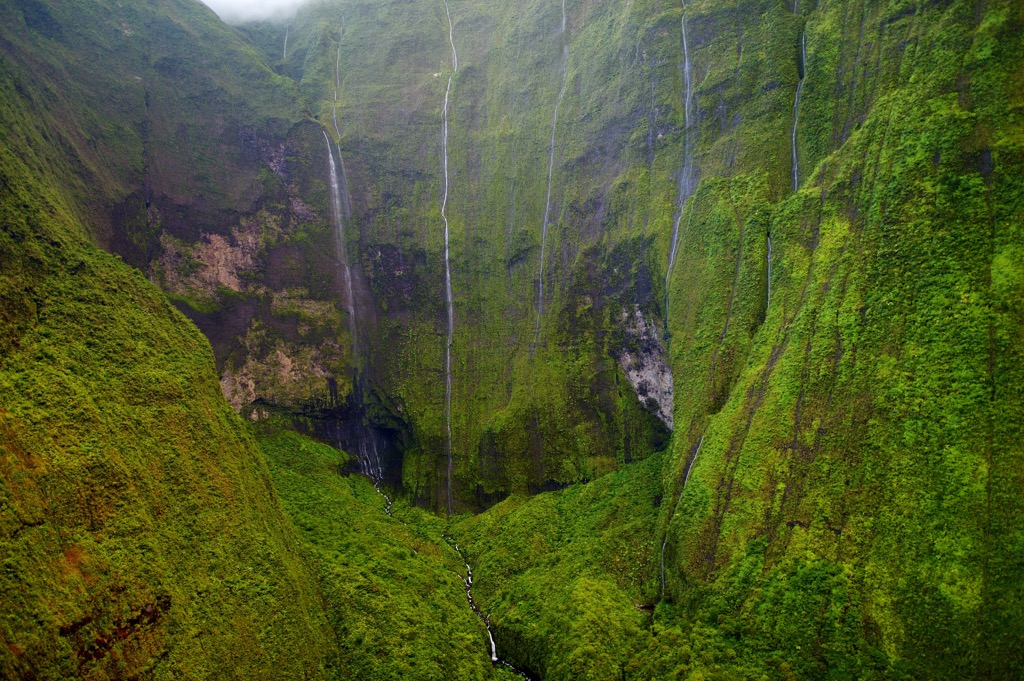
Looking for a place to stay near the Līhu‘e-Kōloa Forest Reserve? Here are some of the best cities and villages to check out in the region:
Kapa’a is home to roughly 10,000 residents and lies northeast of the Līhu‘e-Kōloa Forest Reserve. Within the area lies Old Kapa’a Town, which showcases some of the local history and culture of the region while featuring local businesses, shops, and restaurants.
Visitors can enjoy the beauty of the surrounding white sand beaches or explore the Wailua River, the only navigable river in the entire state. Kapa’a is a historic town on the island and lies just a twenty-minute drive north of the Līhu‘e airport, the primary airport on the island.
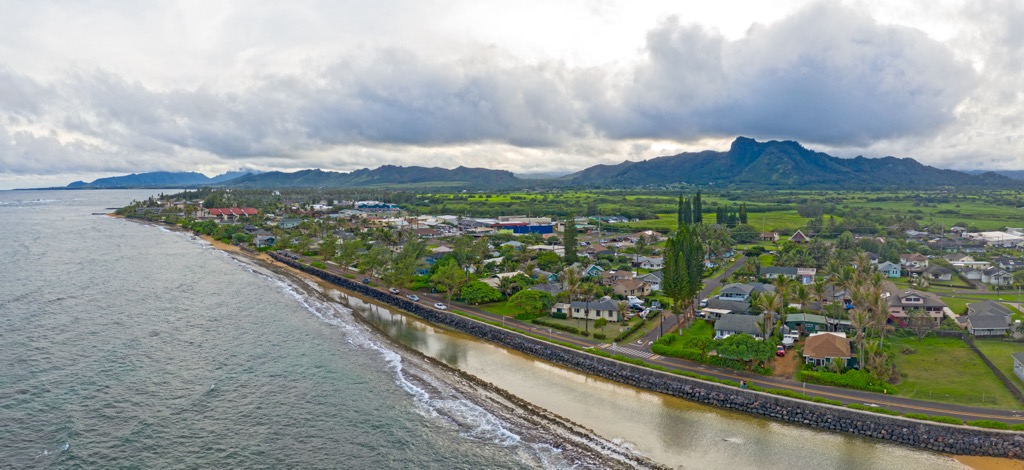
Līhu‘e marks the second most populated region on Kaua’i and acts as the commercial center for the island. The island's main airport is located in Līhu‘e, making it the most traveled spot on Kaua’i.
Historical spots in the region include the ‘Alekoko Fishpond, the Kilohana plantation estate, Kaua’i Museum, and the Grove Farm Homestead Museum. Wailua Falls is another popular site located a short drive north of Līhu‘e.
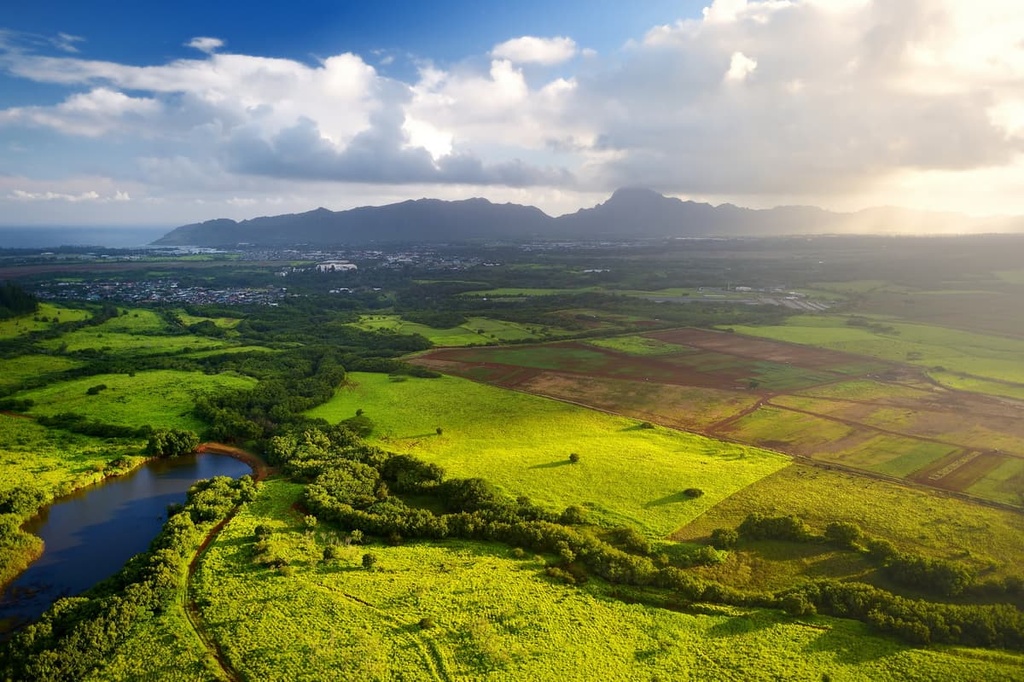
Explore Lihue-Koloa Forest Reserve with the PeakVisor 3D Map and identify its summits.








